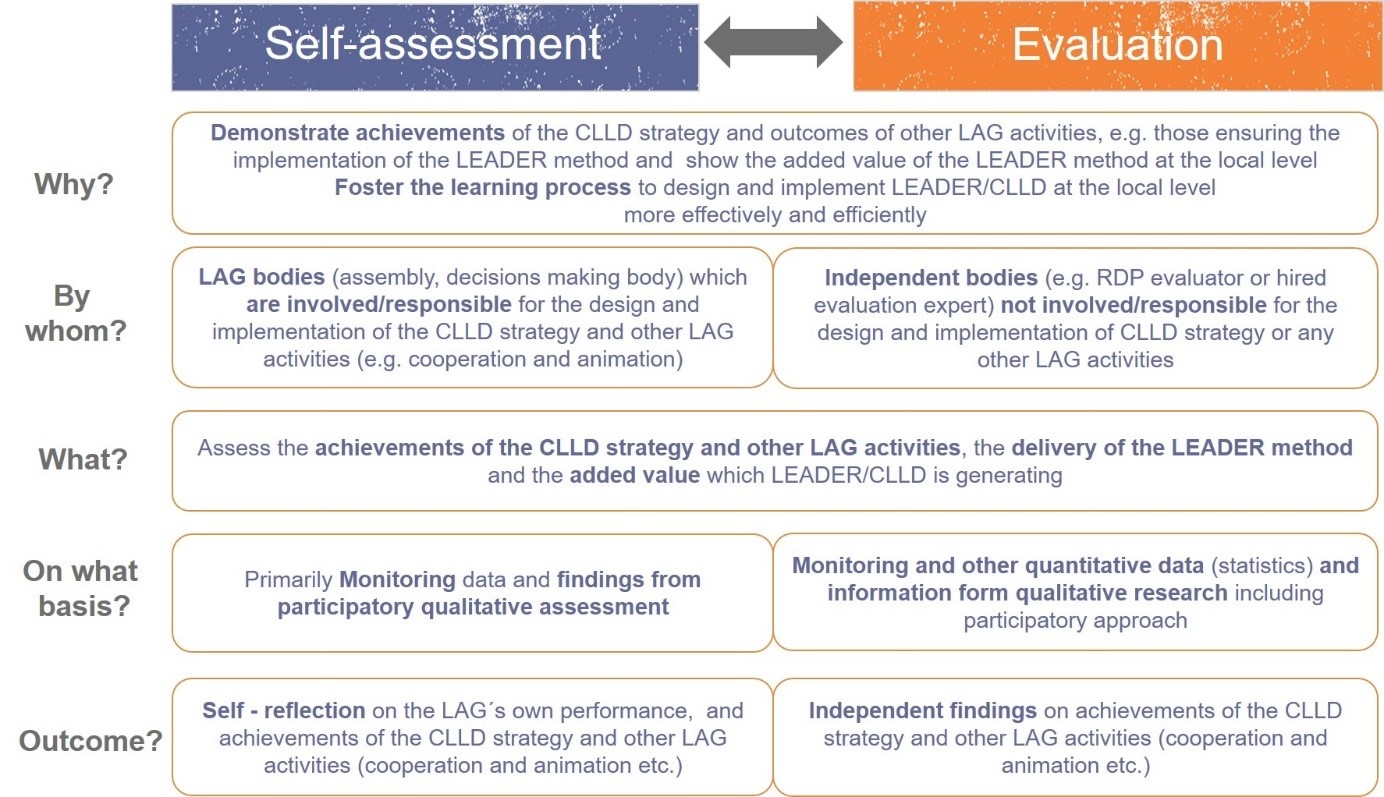Internal reflective process or external point of view?
When LAGs are confronted with the choice to make a self-assessment or an evaluation as part of their mandatory responsibilities of monitoring and evaluation activities linked to the CLLD strategy they often ask:
‘What is the difference?’ or ‘are they the same thing?’ So, is there a difference? And if so, what do we need to know about each of these exercises?
Self-assessment is an ongoing reflective process that is designed and conducted by those who implement an intervention or are part of it (e.g. programme managers, beneficiaries, network members). It generates an inside view on the activities and focuses on the overall performance. Involved actors analyse the way in which they do things and ask themselves how they contribute to the achievement of the agreed objectives and goals. The participatory nature of self-assessment induces learning effects among all those who are part of it.
Evaluation, by contrast, provides an independent external point of view on the interventions (e.g. programmes, projects, and networks) and assesses to what extent the objectives have been achieved and what outcomes (results and impacts) have been produced with allocated inputs. The scope of evaluation is often predefined by legislation or by the client of the evaluation. Evaluation helps to improve the accountability of the money spent and ensures that the interventions are carried out in line with the policy objectives and feed into policy design. In practical terms, the final judgement is developed based on rigorous methods, through means of predefined evaluation questions, judgement criteria and indicators.
It is a good practice to do both exercises and connect them
Evaluations can use the evidence collected through self-assessment as one of the possible information sources when assessing the intervention’s efficiency, effectiveness, results and impacts. Self-assessment may use evaluation results in order to further stimulate self-reflection and learning among all actors.

What are the implications for self-assessment/evaluation if LEADER is part of a multi-funded CLLD strategy?
The multi-fund character of CLLD has implications for the self-assessment/evaluation at the LAG level, particularly because all the operations supported under the various funds are contributing to the same strategy and should create synergies towards the achievement of the objectives/results. In this context, it will be challenging to disentangle the effects arising from the different operations/funds if they are all contributing to the same strategy.
When evaluating multi-funded CLLD strategies, several aspects could be assessed: the articulation/complementarity of the application of the several funds in the same territory (in sum, coherence), the effectiveness of the governance and coordination process when managing several funds. To assess these aspects, it is advisable to develop appropriate evaluation elements.
Additionally, the extent to which the related ESI Funds enabled the LAG to address the needs and potentials could be further explored. This assumes that the integrated and multi-sectoral dimension of the strategy will be reinforced by the multi-fund approach, and that cooperation will benefit from new partners from other funds.

For more information please consult the Evaluation Helpdesk’s Guidelines: Evaluation of LEADER/CLLD.
Find other publications on LEADER/CLLD evaluation in the Helpdesk’s eLibrary!